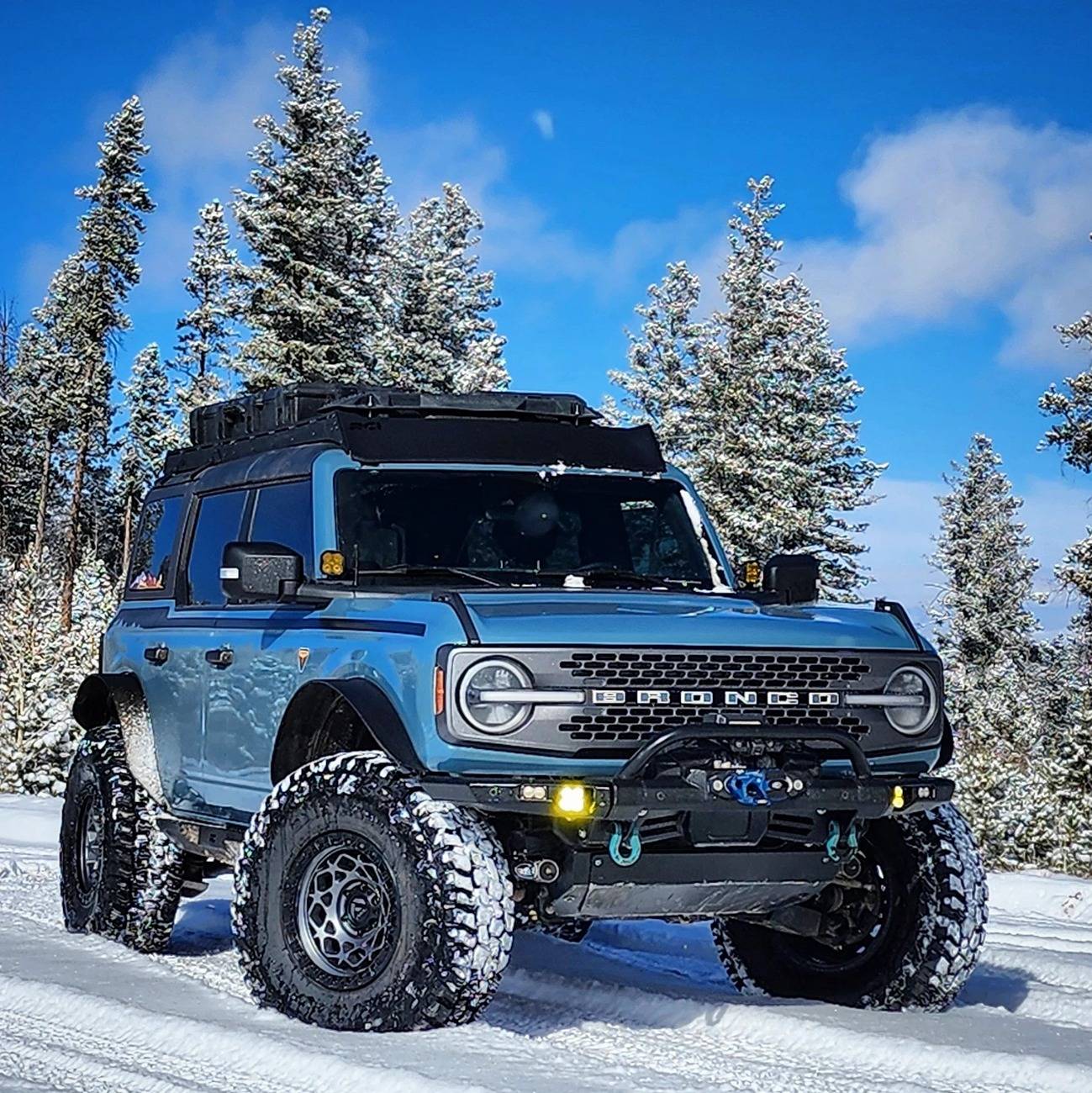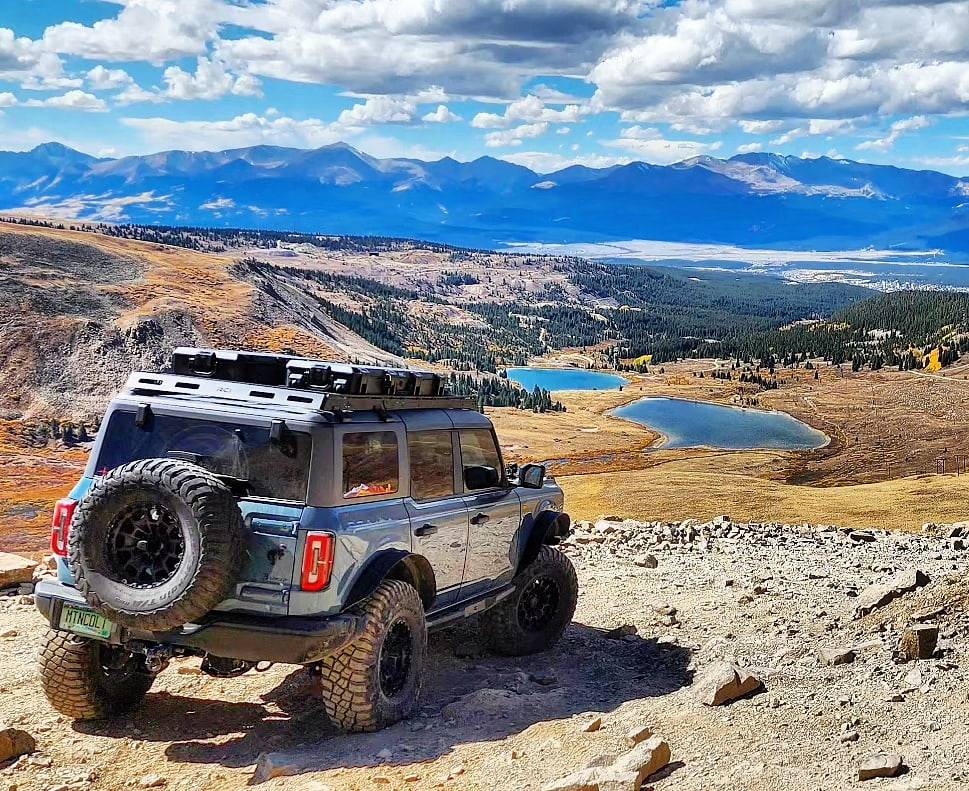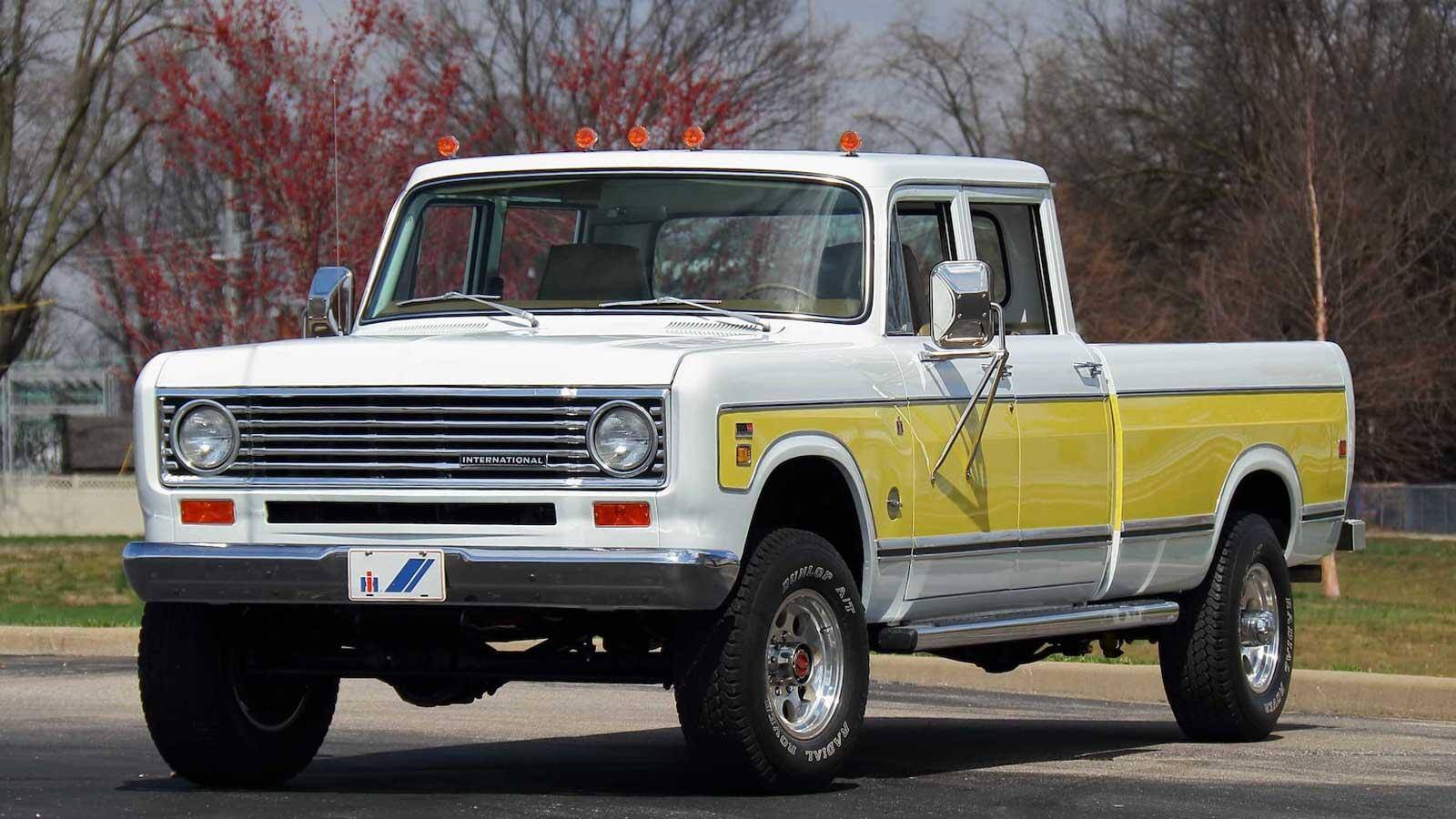- Thread starter
- #1
Very informative look at the Scout EV's solid rear axle, which is actually an "EBeam rear axle" where the electric motor is mounted onto the solid axle.
All credit for the following goes to The Autopian for their excellent underbody / undercarriage look!
I also showed Kevin the rear axle, which he refers to as the “EBeam axle.” Check it out — the motor is actually mounted directly to the rigid axle, just above. You can also see an oil cooler:

Here’s another angle (I think this is the Terra):

And here you can see the axle on the gearbox side (passenger side):

And here it is from the front. You can see there’s actually a removable pan at the front of the axle:

 UPDATE! Pete here, that’s ZF’s pic of the eBeam axle above. David asked me to get that in pronto “with a hat tip to Joel.” Consider our hats tipped!
UPDATE! Pete here, that’s ZF’s pic of the eBeam axle above. David asked me to get that in pronto “with a hat tip to Joel.” Consider our hats tipped!
“The EBeam looks similar to a lot of others I have seen for customers. Weight and [road] impact to the inverter could be a concern,” he told me, mentioning that the EBeam is currently being looked at predominantly by commercial vehicle manufacturers.
To discuss this new electric solid axle — which should offer the tremendous articulation that an independent suspension setup usually cannot – I’ve sent a bunch of photos to our in-house suspension engineer, Huibert Mees. Here’s what he has to say.
A Look At The Industry’s First Electric Solid Axle (In The U.S.)
Hi, this is Huibert taking over. Just this week, as David Tracy has already reported, the Volkswagen-funded Scout brand introduced its first two models – the ‘Terra” pickup and the ‘Traveler” SUV. David is over the moon about them as are many other people, but I have some questions. Scout claims these vehicles use solid axles, which means that, as far as I am aware, they are the first EVs to do so. Normally, EVs, including all EV pickups that I’m aware of, use an independent suspension, regardless of whether the original platform used solid axles. I talked about this in my post and video about the F-150/Raptor/lighting trio.
In that case, both the base F-150 and the Raptor use solid rear axles, but the Lightning changes to a fully independent rear suspension. The reason is that with a big battery underneath the vehicle, there is no room for a driveshaft. This means the motor has to be at the rear of the vehicle, so it only makes sense to mount the motor right where the axle is and run independent halfshafts out to the wheels. Of course, the motor now takes up the space that the axle housing would need in order to move up and down with the suspension. An independent suspension design is the only practical way to resolve this problem. Or so I thought.
Up to now, solid axles and EV motors simply didn’t merge in my mind. So, what did Scout do? Well, fear not, fellow Autopians, thanks to David’s intrepid phone camera, we have some photos that offer us clues to answer this burning question. Let’s start with the front suspension:



Looks like a fairly standard double wishbone design with a Rack and Pinion steering setup. This is standard fare for pickups, even EV trucks. There’s nothing out of the ordinary, and without knowing a lot more detail about this specific design, nothing I can find fault with. A good choice! [Ed Note: I’m not a huge fan of CV-axles over u-joint axles, but independent suspension designs pretty much always use CVs, so I’ll deal with it. The downside of a CV axle is that the CV joint boots can tear while off-road, and if that happens, the joint fails. Repairing the joint on the trail is a difficult affair. On a Jeep Wrangler with a solid front axle, you have universal joints, which don’t have rubber boots to tear (just small rubber seals), and if they fail, you can replace them with a $15 part using nothing more than a socket and a rock. This, along with reduced articulation, is a small compromise from someone used to a solid front axle, but it’s entirely expected. -DT].
Now let’s look at the rear:




We can clearly see that this is NOT an independent suspension but is indeed a solid axle, as Scout claims. We can also see a couple of the links that hold the axle in place. Here are two slightly different angles of the same axle, with the lower one showing one of the upper control arm links:


Two lower links, a Panhard rod, and an anti-roll bar. There’s also a pair of upper links to go along with the lower links. Together, they form the necessary support and location of the axle, very similar to the Ford Bronco, Jeep Wrangler, F-150 Raptor, as well as the Toyota Tacoma and many others.
But if we look a little more closely, we see something else:

We see what certainly appears to be an electric motor located above the axle and a gearbox inline with the wheels. All of this is located in the axle housing which together with the axle shafts, brakes, wheels, and tires, makes one giant assembly. That’s a LOT of stuff that has to move up and down every time the wheels encounter a bump. It’s called unsprung mass and one of every suspension engineer’s goals in life is to reduce unsprung mass as much as possible.
Source: https://www.theautopian.com/i-crawl...o-look-at-the-engineering-heres-what-i-found/
All credit for the following goes to The Autopian for their excellent underbody / undercarriage look!
I also showed Kevin the rear axle, which he refers to as the “EBeam axle.” Check it out — the motor is actually mounted directly to the rigid axle, just above. You can also see an oil cooler:
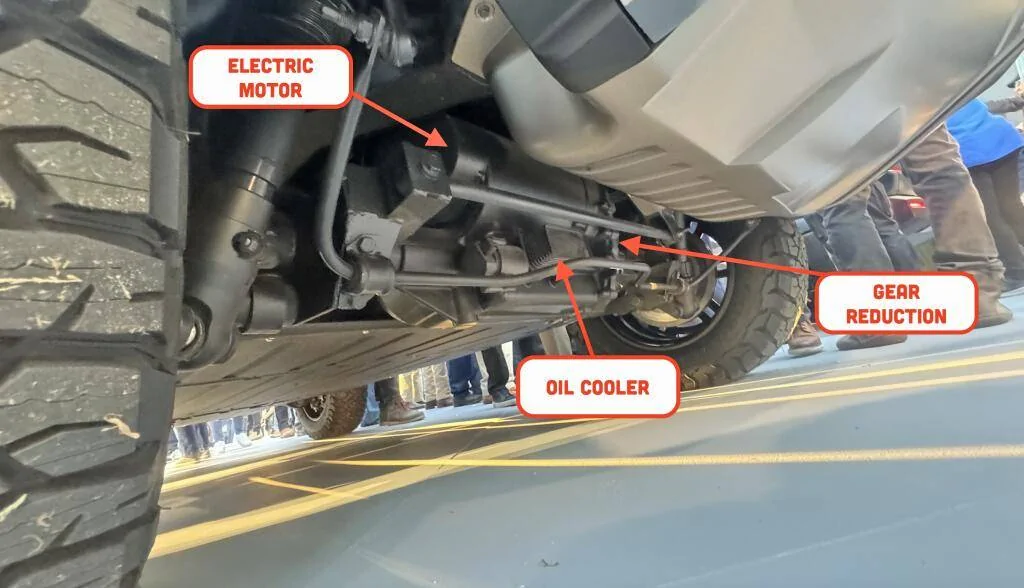
Here’s another angle (I think this is the Terra):
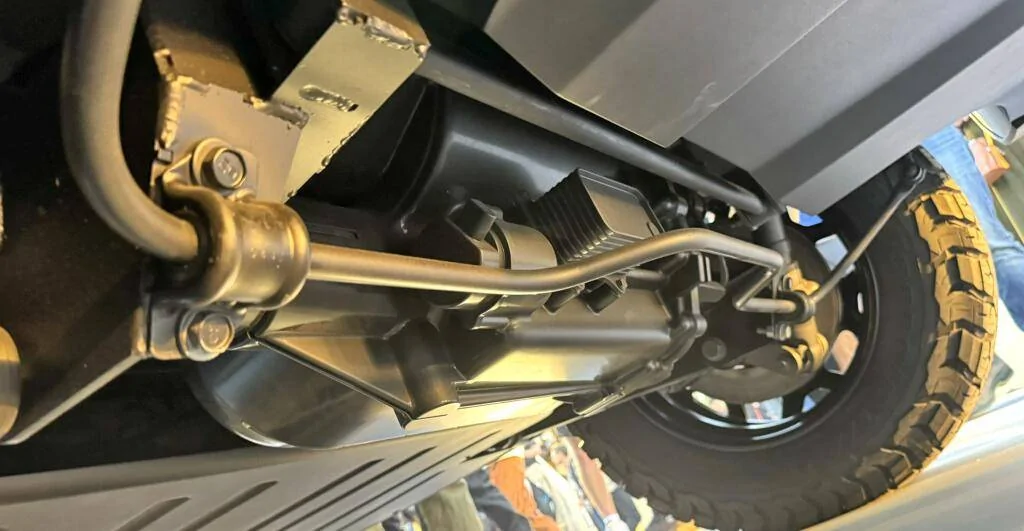
And here you can see the axle on the gearbox side (passenger side):

And here it is from the front. You can see there’s actually a removable pan at the front of the axle:

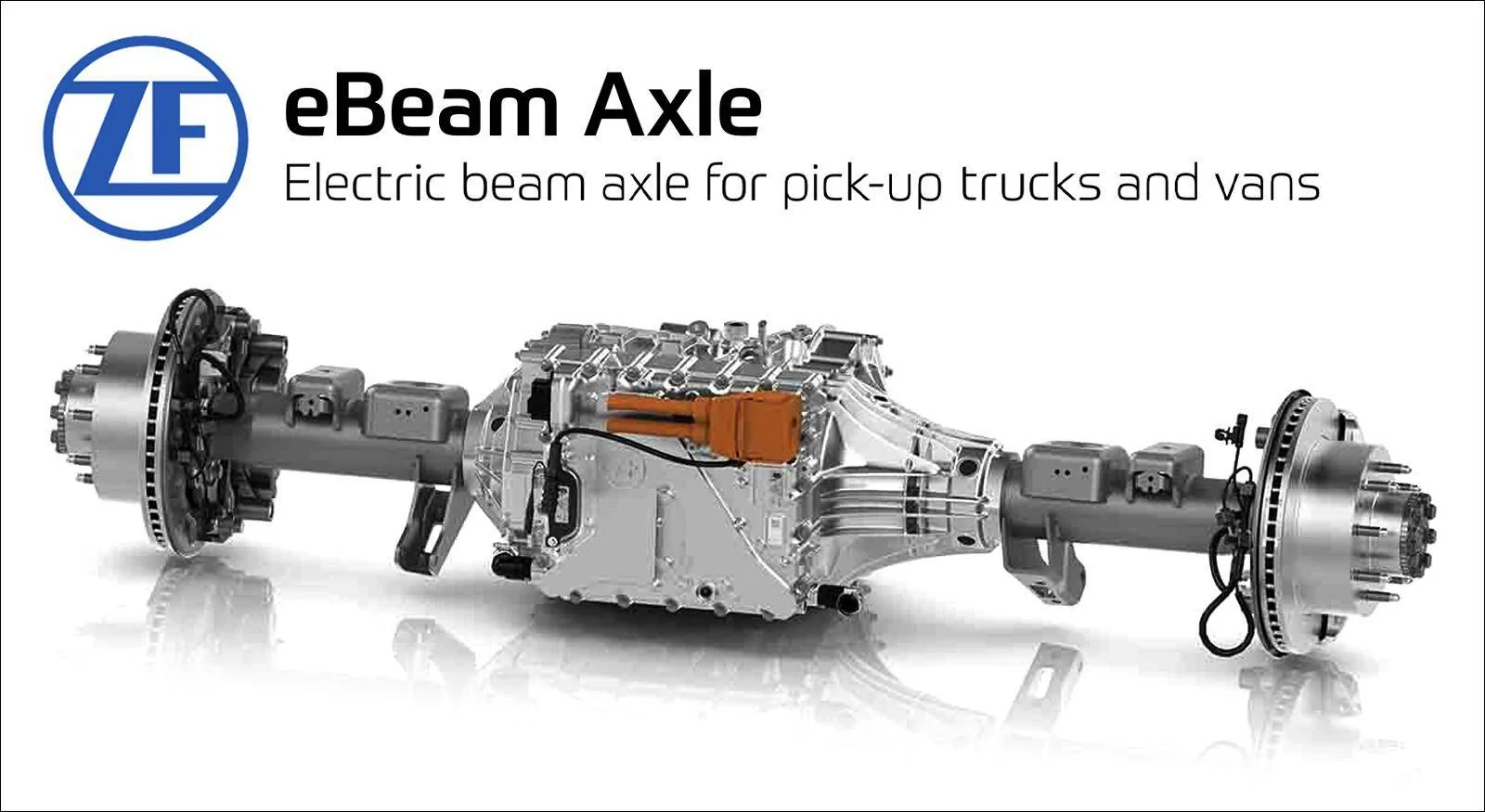
“The EBeam looks similar to a lot of others I have seen for customers. Weight and [road] impact to the inverter could be a concern,” he told me, mentioning that the EBeam is currently being looked at predominantly by commercial vehicle manufacturers.
To discuss this new electric solid axle — which should offer the tremendous articulation that an independent suspension setup usually cannot – I’ve sent a bunch of photos to our in-house suspension engineer, Huibert Mees. Here’s what he has to say.
A Look At The Industry’s First Electric Solid Axle (In The U.S.)
Hi, this is Huibert taking over. Just this week, as David Tracy has already reported, the Volkswagen-funded Scout brand introduced its first two models – the ‘Terra” pickup and the ‘Traveler” SUV. David is over the moon about them as are many other people, but I have some questions. Scout claims these vehicles use solid axles, which means that, as far as I am aware, they are the first EVs to do so. Normally, EVs, including all EV pickups that I’m aware of, use an independent suspension, regardless of whether the original platform used solid axles. I talked about this in my post and video about the F-150/Raptor/lighting trio.
In that case, both the base F-150 and the Raptor use solid rear axles, but the Lightning changes to a fully independent rear suspension. The reason is that with a big battery underneath the vehicle, there is no room for a driveshaft. This means the motor has to be at the rear of the vehicle, so it only makes sense to mount the motor right where the axle is and run independent halfshafts out to the wheels. Of course, the motor now takes up the space that the axle housing would need in order to move up and down with the suspension. An independent suspension design is the only practical way to resolve this problem. Or so I thought.
Up to now, solid axles and EV motors simply didn’t merge in my mind. So, what did Scout do? Well, fear not, fellow Autopians, thanks to David’s intrepid phone camera, we have some photos that offer us clues to answer this burning question. Let’s start with the front suspension:
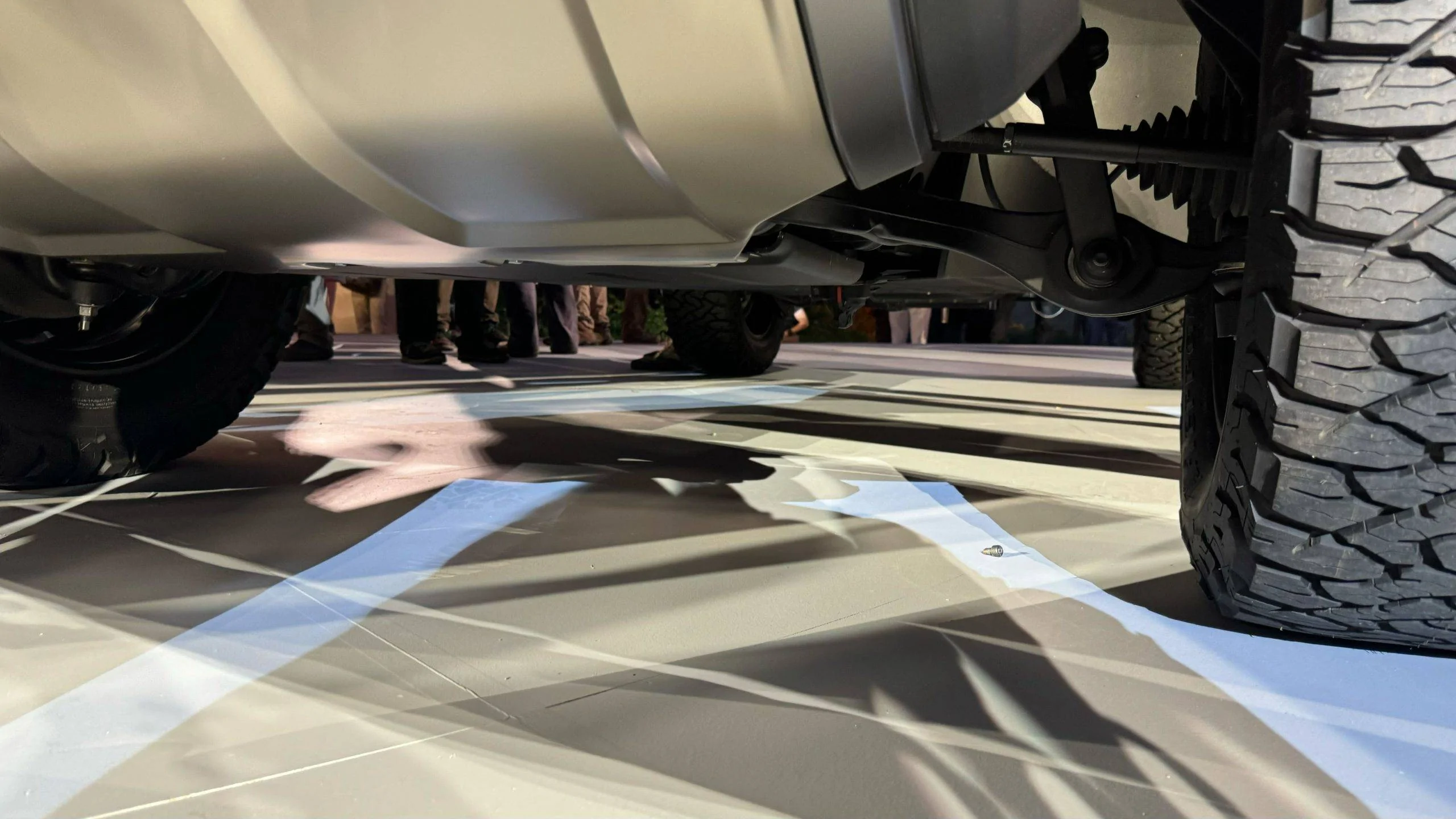
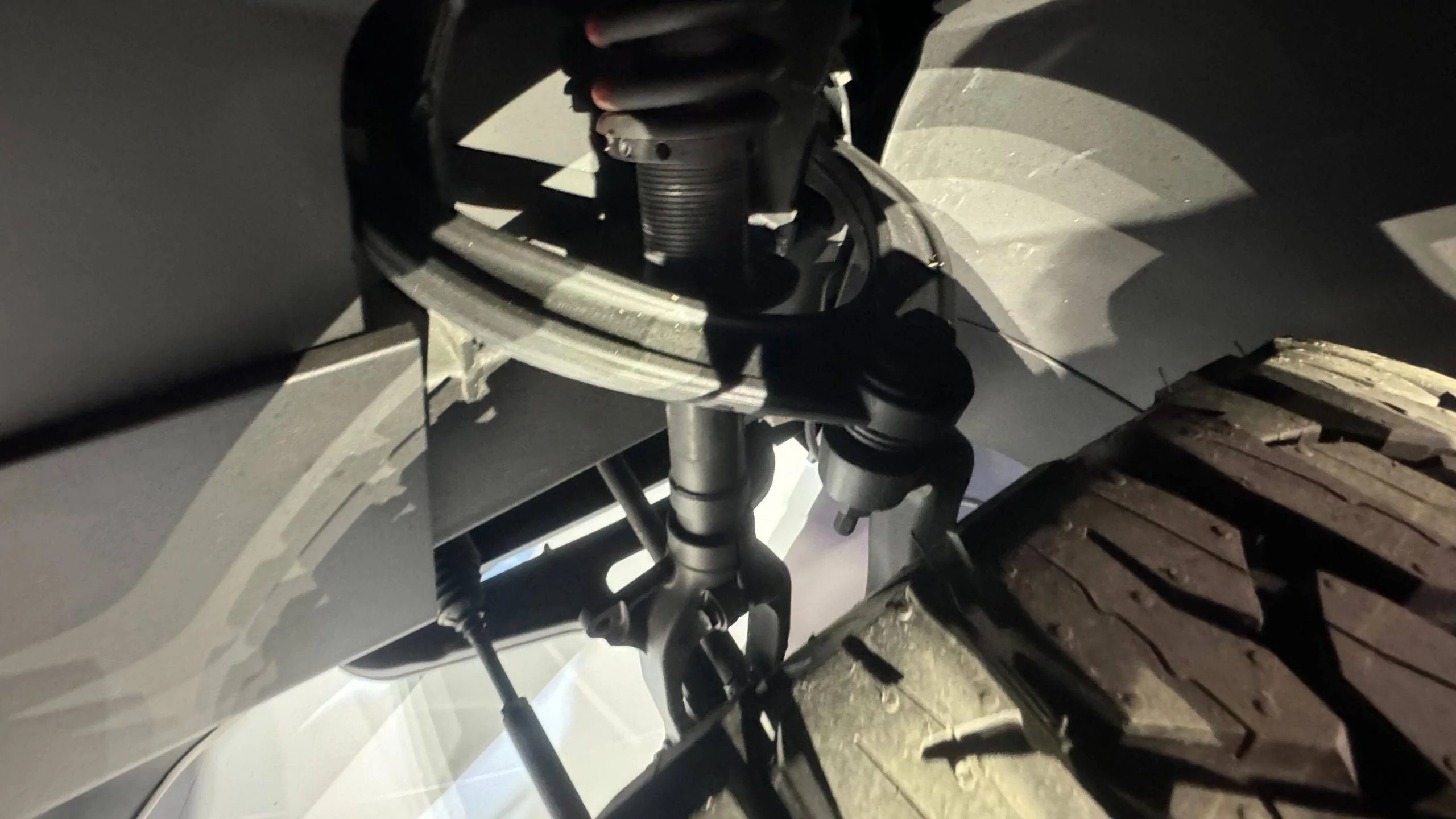

Looks like a fairly standard double wishbone design with a Rack and Pinion steering setup. This is standard fare for pickups, even EV trucks. There’s nothing out of the ordinary, and without knowing a lot more detail about this specific design, nothing I can find fault with. A good choice! [Ed Note: I’m not a huge fan of CV-axles over u-joint axles, but independent suspension designs pretty much always use CVs, so I’ll deal with it. The downside of a CV axle is that the CV joint boots can tear while off-road, and if that happens, the joint fails. Repairing the joint on the trail is a difficult affair. On a Jeep Wrangler with a solid front axle, you have universal joints, which don’t have rubber boots to tear (just small rubber seals), and if they fail, you can replace them with a $15 part using nothing more than a socket and a rock. This, along with reduced articulation, is a small compromise from someone used to a solid front axle, but it’s entirely expected. -DT].
Now let’s look at the rear:
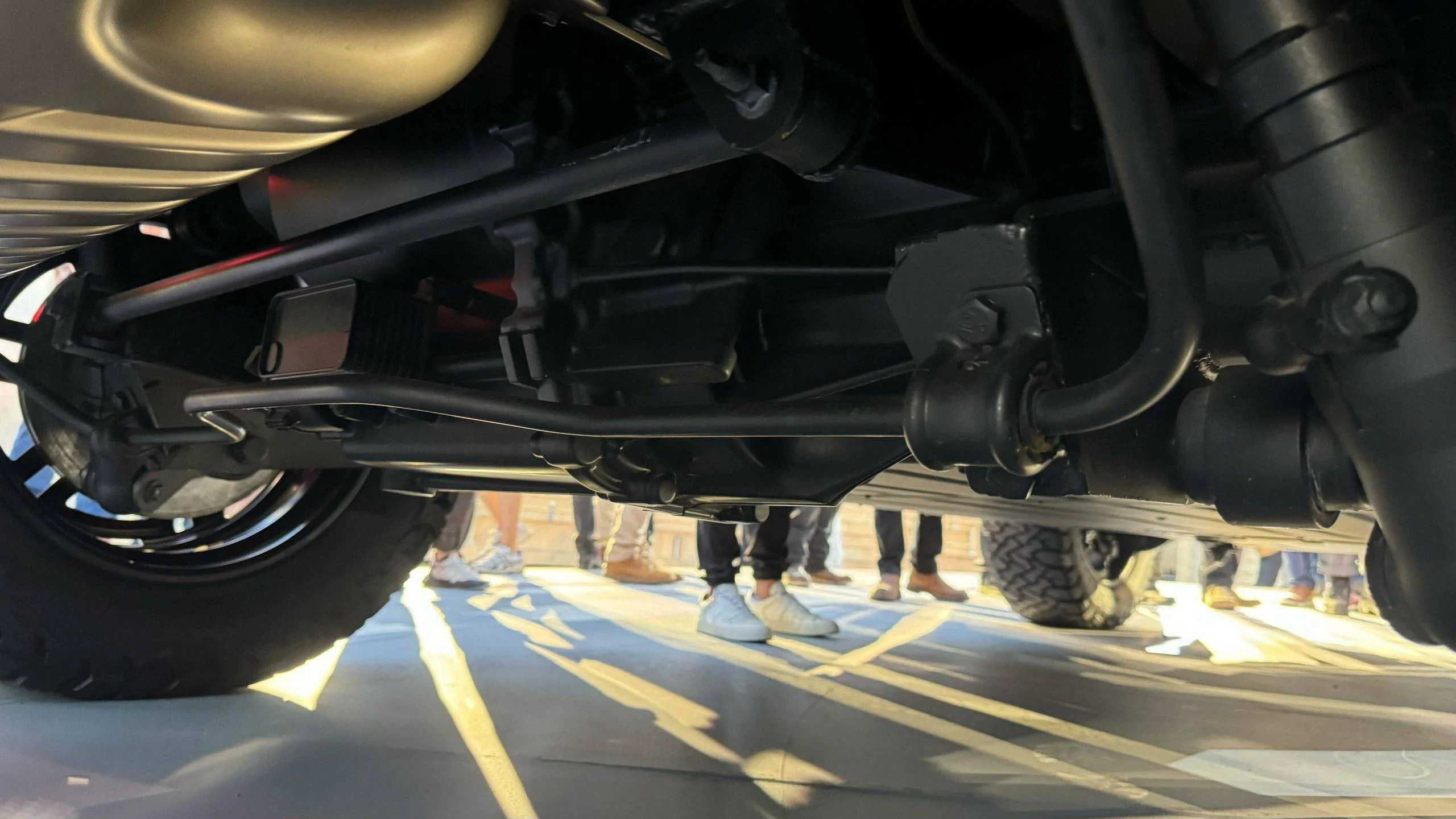
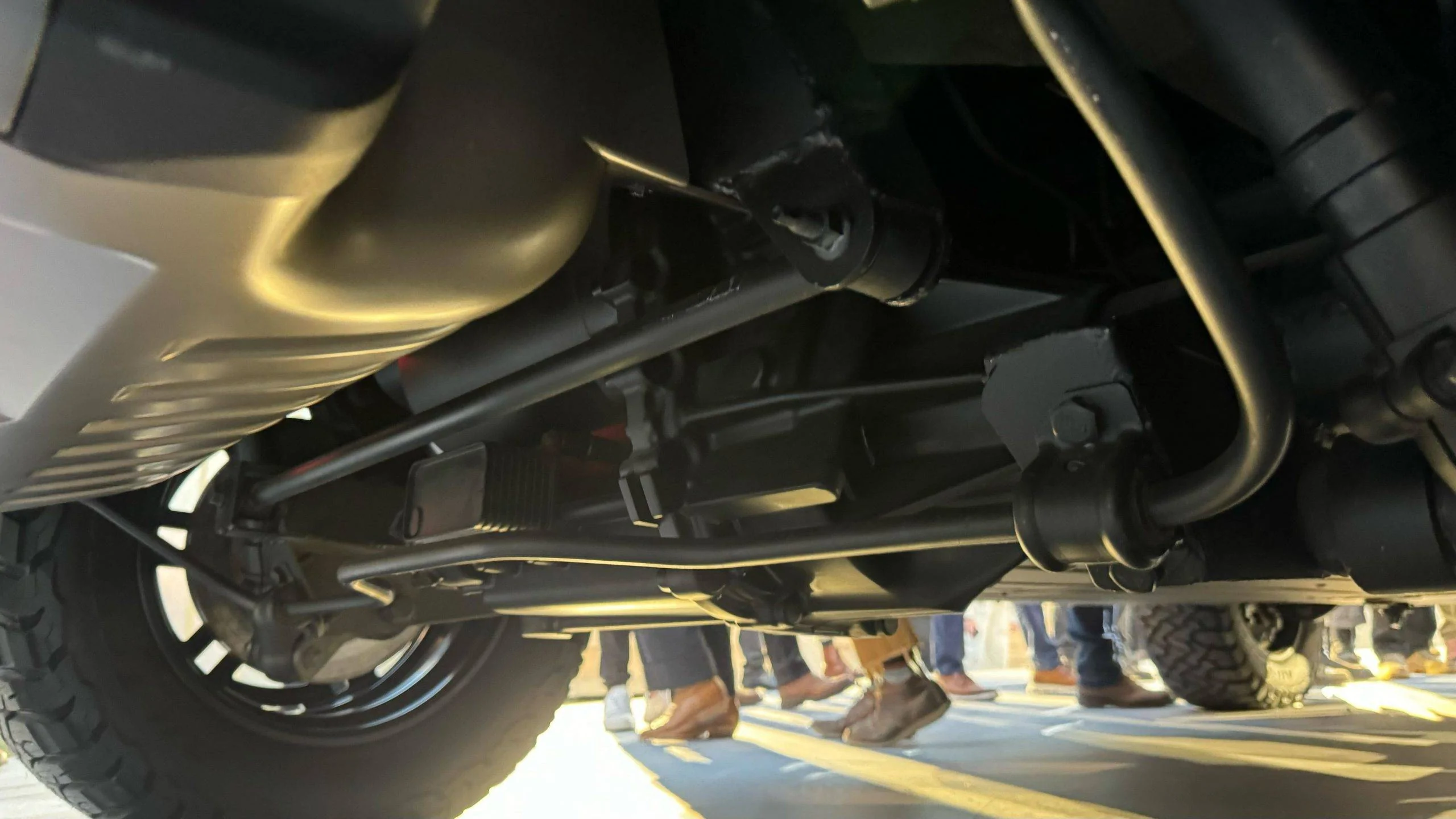
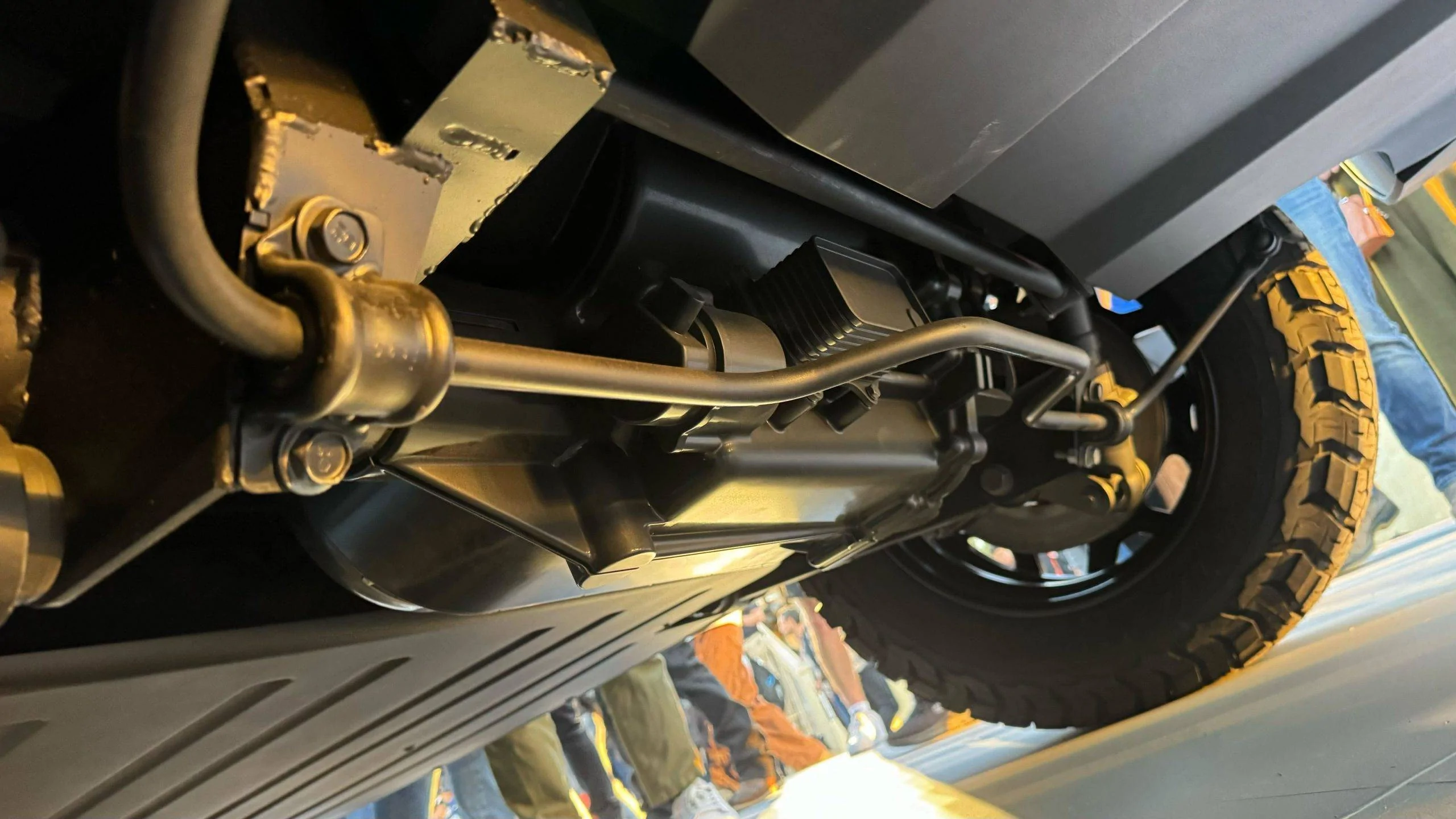
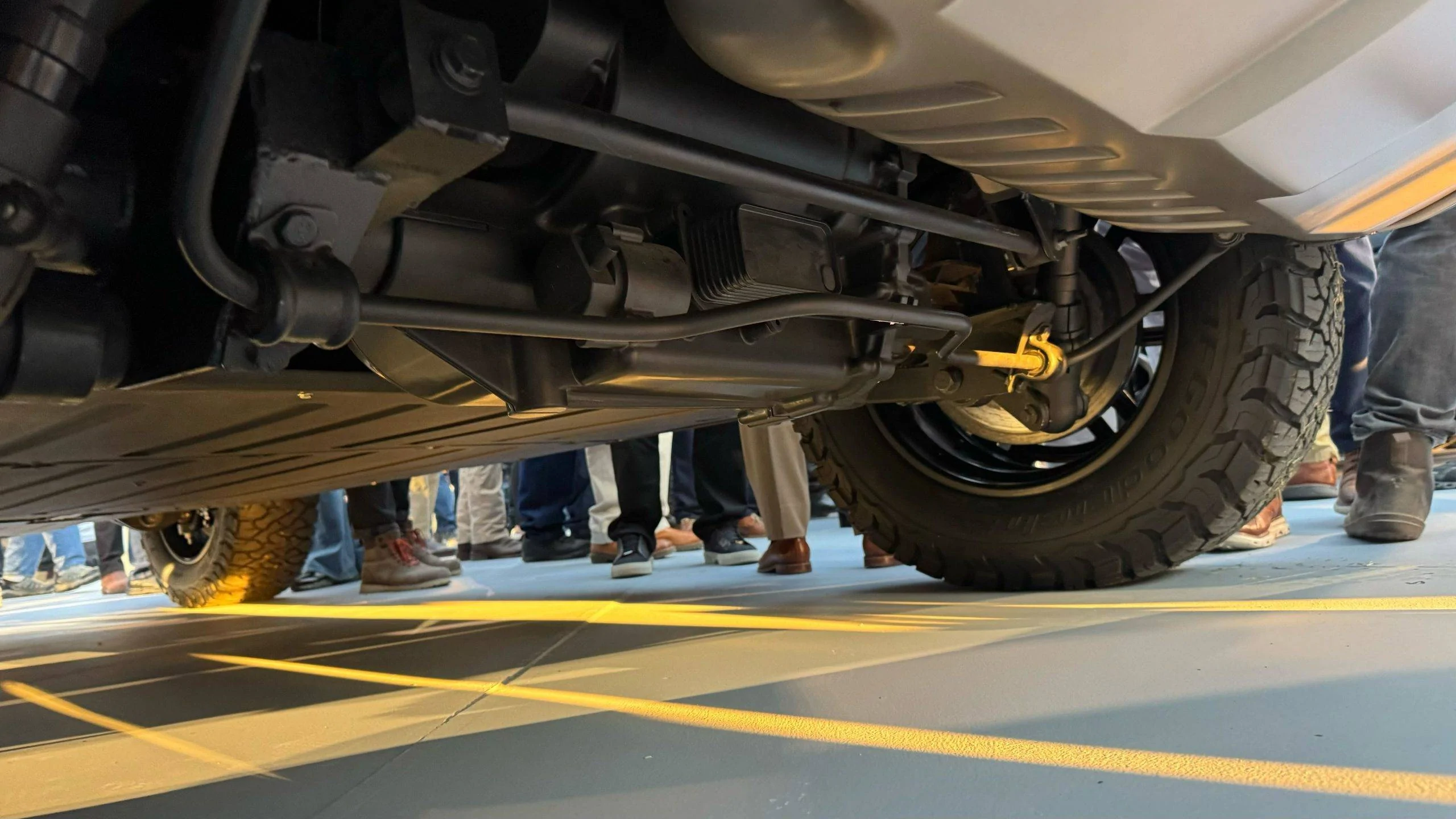
We can clearly see that this is NOT an independent suspension but is indeed a solid axle, as Scout claims. We can also see a couple of the links that hold the axle in place. Here are two slightly different angles of the same axle, with the lower one showing one of the upper control arm links:


Two lower links, a Panhard rod, and an anti-roll bar. There’s also a pair of upper links to go along with the lower links. Together, they form the necessary support and location of the axle, very similar to the Ford Bronco, Jeep Wrangler, F-150 Raptor, as well as the Toyota Tacoma and many others.
But if we look a little more closely, we see something else:
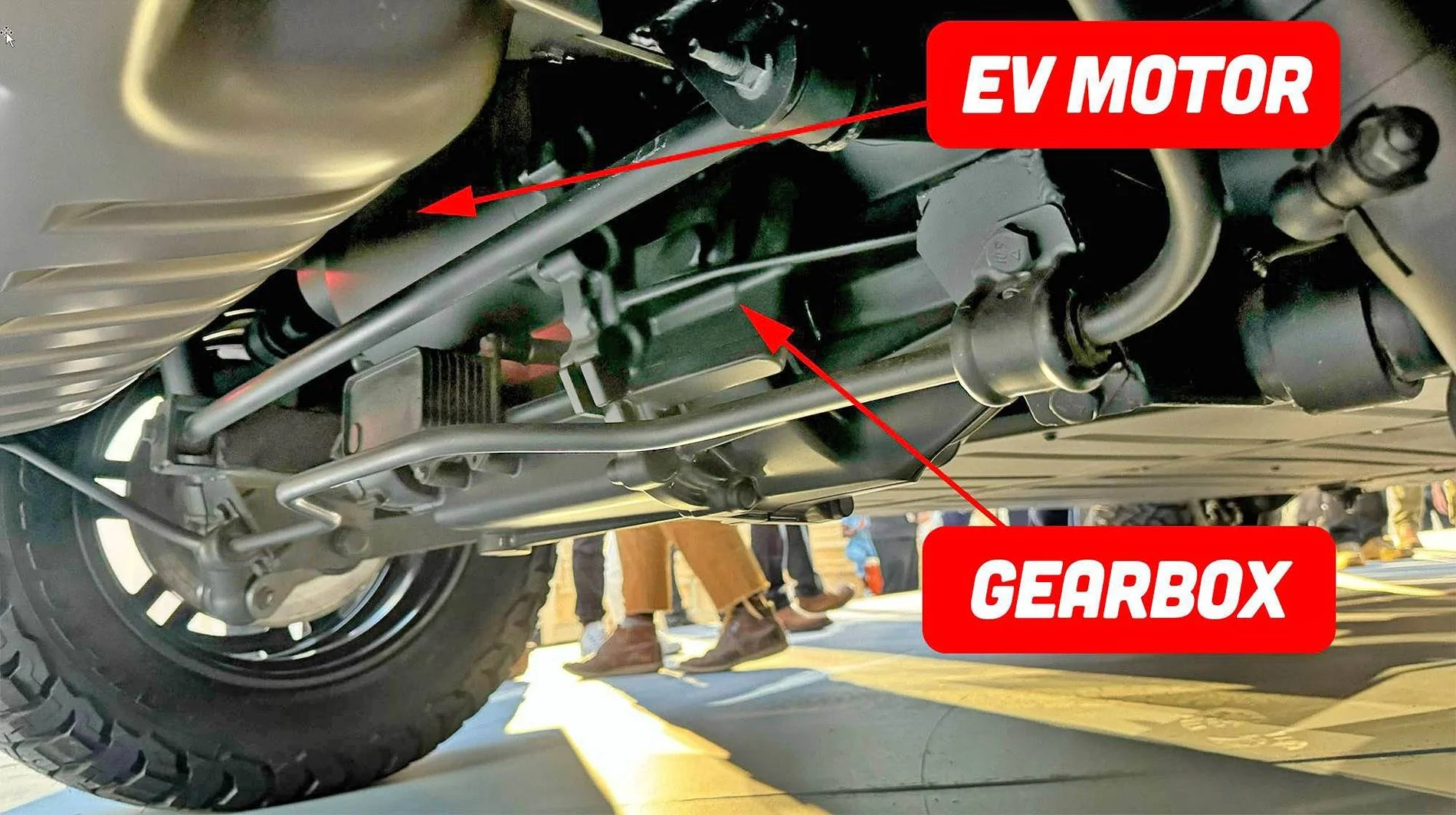
We see what certainly appears to be an electric motor located above the axle and a gearbox inline with the wheels. All of this is located in the axle housing which together with the axle shafts, brakes, wheels, and tires, makes one giant assembly. That’s a LOT of stuff that has to move up and down every time the wheels encounter a bump. It’s called unsprung mass and one of every suspension engineer’s goals in life is to reduce unsprung mass as much as possible.
Source: https://www.theautopian.com/i-crawl...o-look-at-the-engineering-heres-what-i-found/


